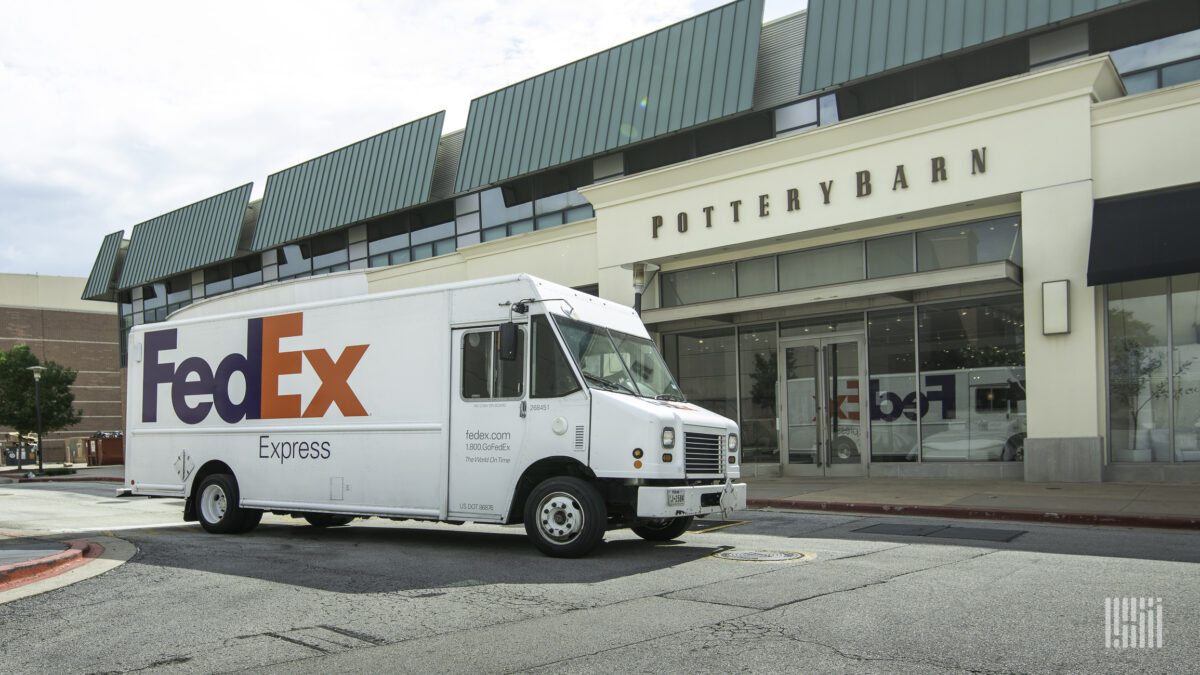Perhaps the best thing that can be said about FedEx Corp.’s fiscal 2022 first-quarter results is that no one who follows the company can be blindsided by them or the reasons behind them.
The Memphis, Tennessee-based delivery company (NYSE:FDX) posted quarterly earnings per share of $4.37, which were adjusted by 27 cents per share in business realignment costs and ongoing integration expenses related to the 2016 acquisition of Dutch delivery company TNT Express LLC. The total adjusted results were well below the $4.98-to-$5.03-per-share projections from various analysts, though Wall Street throughout the quarter had been getting its arms around lower numbers as FedEx became transparent about increasingly serious staffing shortages driving up costs and causing operating problems, especially at its FedEx Ground unit.
FedEx’s costs in the quarter spiked by $450 million over the year-earlier period, the company said. Of that, $320 million was incurred at FedEx Ground, where most of the growth and expansion at the company is currently taking place. The unit’s operating results were hurt by “higher labor costs and network inefficiencies due to inadequate staffing. In addition, results at the unit’s Express air and international unit were unfavorably impacted by a surge in air charter demand during its fiscal 2021 quarter that did not materialize in the most recent period.
FedEx acknowledged that supply chain disruptions in the quarter had slowed domestic parcel demand to a degree that executives had not anticipated in earlier projections. The company expected the combination of problems to last longer than originally forecast, and as a result lowered its full fiscal year diluted EPS range to $18.25 and $19.50 a share from $18.90 to $19.90 per share.
Though domestic yields and volumes came in at acceptable levels, they were not offset by what is seen as a 10.6% year-on-year increase in costs per package. Adjusted operating margins dropped to 6.8% from 8.5%, while adjusted net income dipped to $1.19 billion from $1.28 billion. Revenue rose to $22 billion from $19.3 billion.
FedEx shares have been on a steady descent since June 1, when they hit a 52-week high of just below $320 a share. Nearly an hour into after-close trading on Tuesday, shares were down nearly 4%.
In a note published Tuesday morning before the results were released, Amit Mehrotra of Deutsche Bank said more pronounced weakness coming out of the quarter could put the company’s full-year guidance at risk. However, Mehrotra said that the company still holds strong pricing power, as evidenced by Monday’s announcement that it would raise 2022 tariff rates by nearly 6% almost across the board.
Analysts will parse management’s commentary about cost trends to determine if and when favorable pricing initiatives will begin to push cost worries onto the back burner.











